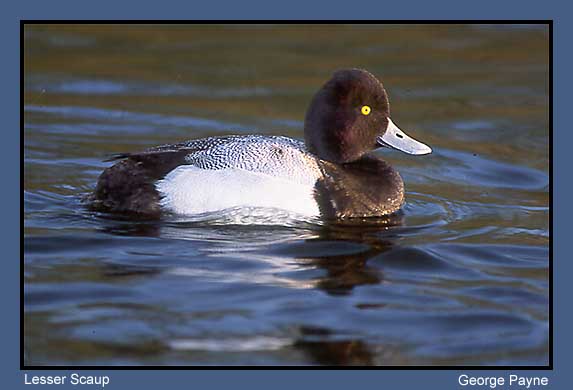| This is one of our most abundant ducks and surely one of
the best known. It goes mainly by two names, "blue-bill" or dos gris.
In size and color it resembles the Ring-necked Duck, but it has a blue bill,
lacking the white
ring around the tip. The back is speckled black and white
and, in sunlight at a distance, reflects only slightly darker than the white
sides, whereas the Ring-neck's back is black. Seen from the side the scaup
lacks the prominent vertical white stripe, or slash, before the wing that
is so characteristic of the male Ring-neck. In the female scaup the line
of demarcation is very sharp between the creamy white area at the base of
the bill and the dark face; in the Ring-neck this light area blends almost
imperceptibly into the dark-colored area of the cheeks. The distinctions
between the Lesser and Greater Scaups are discussed in the preceding account. |
| A few Lesser Scaup are almost always present on some of our
larger lakes in summer, but there is no evidence that the species has ever
nested in the state. Migration begins to bring in the wintering population
around the first of October, although usually the species is not present
in large numbers until the latter part of the month. Most of our scaups
are gone by early April. Especially worthy of mention are the great rafts,
often numbering into the thousands, that scaups form in winter along the
rim of the Gulf. --George H. Lowery, Jr., 1974, Louisiana Birds |

